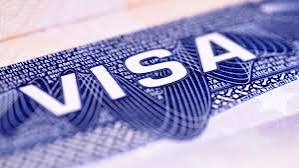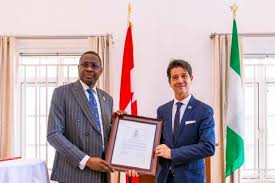Mark Carney, Canada’s newly sworn-in Prime Minister, has begun his tenure with a resolute stance against US President Donald Trump’s repeated threats to annex Canada. Carney, who succeeded Justin Trudeau as Canada’s 24th prime minister, emphasized that safeguarding Canada’s sovereignty and addressing Trump’s trade policies would be among his administration’s top priorities.
“Canada will never, ever, in any way, shape, or form, be part of the United States,” Carney declared during his inaugural address. While expressing hope for future collaboration with Washington, he made it clear that Canada’s independence was non-negotiable.
Relations between Ottawa and Washington have soured since Trump’s return to power in January, marked by a trade war and Trump’s controversial demand for Canada to relinquish its independence and become the 51st US state. In retaliation, Canada has imposed countermeasures against Trump’s tariffs, while public opinion in Canada has been overwhelmingly critical of the US president’s stance.
Carney has described the Trump administration as the most significant challenge Canada has faced in a generation. Despite being a political newcomer with no prior experience in elected office, Carney secured the leadership of the Liberal Party in a decisive vote, replacing Trudeau, who had served as prime minister since 2015.
Carney’s leadership will soon face its first major test, as Canada appears to be heading toward a general election in the coming weeks. Early polls suggest a tight race against the opposition Conservatives, who have sought to portray Carney as an out-of-touch elitist. However, Carney has countered these claims by highlighting his extensive global experience, including his tenure as Governor of the Bank of Canada during the 2008–2009 financial crisis and as Governor of the Bank of England during the Brexit turmoil.
In his first week as prime minister, Carney visited a steel plant in Hamilton, Ontario, to address the impact of Trump’s 25% tariffs on steel and aluminum imports. Wearing a hard hat and goggles, Carney reaffirmed his commitment to negotiating a trade deal with the US, provided that Canadian sovereignty remains a fundamental condition.
Carney has also announced plans to travel to Paris and London next week to strengthen Canada’s alliances with European partners amid deteriorating ties with the United States. German Chancellor Olaf Scholz, European Commission President Ursula von der Leyen, and Ukrainian President Volodymyr Zelensky were among the first world leaders to congratulate Carney on his new role.
Domestically, Carney has sought to distance himself from Trudeau by adopting a more centrist approach. While he has pledged to prioritize climate change, he plans to replace Trudeau’s carbon tax with market-driven solutions. Despite these efforts, Carney’s newly sworn-in cabinet retains several key figures from Trudeau’s administration, particularly those involved in trade negotiations with the US.
As Canada navigates this challenging period in its relationship with its southern neighbor, Carney’s leadership will be closely watched. His ability to balance domestic priorities with international diplomacy will likely define his tenure as prime minister.







